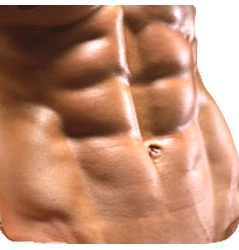Brian Schiff’s Blog
Injury Prevention, Sports Rehab & Performance Training Expert
As I prepare to present at an ACL Symposium with some of my colleagues this weekend, I thought I would share some of the information I am presenting on injury prevention.
Research consistently shows that neuromuscular training is beneficial in reducing ACL injuries. This type of training hinges on training our athletes to land, plant and cut on a bent knee while shifting the COM (center of mass) forward. Too many times, I see female athletes land with stiff knees in an upright posture relying too heavily on their quads.
Emphasizing hip and knee flexion is vital in order to activate the posterior chain and provided a restraint to anterior tibial translation. When it comes to landing and plyometrics, I feel strongly that we need to focus on repetitive drills that enhance power and teach ideal form.
These exercises should include single and double leg varieties, but more importantly they should challenge the body in the sagittal, coronal and transverse plane. I have included a short video today that illustrates just a few exercises that I incorporate in my training sessions.
Stay tuned as I will share more details about prevention training in future posts.
Whenever I speak at fitness industry events, I always tell my fellow fitness comrades that they must do everything in their power to elevate the profession. I live in both the “rehab” and “training” world daily. I can tell you unequivocally that the words “personal trainer” do not garner tons of respect in the medical community in many cases.
I will share a personal story from my professional work experience this week that illustrates why. Yesterday, I evaluated a new patient (45 y/o male) who just underwent an ACL allograft reconstruction and medial meniscectomy for a medial meniscus tear. See the image below for an illustration of an ACL tear.

When I asked the patient how his injury occurred he replied, “I tore my ACL doing a plyometric workout with the personal trainer at my work.” Ouch! Naturally I wanted to know more. So, I pressed him for more information – things like:
- What kind of plyometrics
- How many
- Were they at the beginning or end of the session
- How long had you been doing them
Let me tell you that a lot of therapists would not have asked these questions. They would have moved on in the evaluation, dismissing this trainer as an incompetent fitness pro in their mind. The fact of the matter is that bad things do happen at times even when we are doping everything just right so I like to give people the benefit of the doubt in most cases.
However, some of his answers led me to believe this particular trainer needed further education. My client said the entire 30-40 minute workout was plyometrics. He was doing single leg multi-directional hops, but actually tore the ACL during a broad jump. He mentioned he had only done a handful of the workouts before getting injured. The kicker was when I asked him if anyone else in the class had been injured, and he remarked that another man recently tore his Achilles tendon.
For those who know me well, it is safe to say I am an “ACL geek” of sorts. I love studying, reading and searching for the best way to rehab and prevent these injuries. As I have grown in the profession, I have become increasingly concerned with articular cartilage damage and the long term effects it has on our young athletes.
Perhaps I am getting more concerned as my knees aren’t getting any younger either (lol). Anyway, I truly believe we often underestimate how deleterious cartilage injuries can be long term. In addition, I feel we, as rehab and conditioning professionals, need to better understand how our training impacts the cartilage regardless of whether patients had a concomitant bone bruise with their ACL injury or not.
One of my favorite prehab exercises is a single leg hop and stick (see below)

I typically begin with an alternate leg approach (push off right and land on left) prior to initiating takeoff and landing on the same leg to teach proper landing mechanics. By now, we know increasing hip and knee flexion, as well as shifting center of mass forward reduces ACL strain and injury risk through a diminished extension moment.
However, what we may not know as much about is how an ACL reconstruction alters tibiofemoral joint mechanics at such a landing. I want to share some interesting information from a recent article in the September edition of The American Journal of Sports Medicine. The article by Deneweth et al. looked at tibiofemoral joint kinematics of the ACL reconstructed knee during a single-legged hop landing.
So, I am about 4 weeks into my new job at as a supervisor and sports physical therapist at the Athletic Performance Center (www.apcraleigh.com). So far, I am really enjoying it.
I have seen lots of different athletes ranging from youth to professionals. The one thing people often seek to eliminate with rehab is pain. Ironically, what most people fail to realize is that this pain is actually one of the biggest tools they need to rely on in the recovery process.
You see, most injuries I encounter are related to repetitive micro-trauma or overuse. Such injuries include tendonitis, bursitis, stress fractures, muscle strains, cervical and lumbar disc bulges, and so on.

It is critical that people learn to read their own pain as a marker of how well their body is holding up to the stress they are subjecting it to each day. If they simply learn to recognize and respect pain and what it tells them, they would be able to rehab and recover much faster.
Pain, while undesirable, is one of the most important tools we can use as therapists, strength coaches, ATC’s and fitness enthusiasts to judge how best to move forward or step back.
No pain, no gain is old school and best left in the past. To help athletes today and long term, it is best to educate them how best to recognize and react to pain when it occurs. Too many times they ignore it or fail to report it because they believe they will be held out of participation, or it is not a big deal.
Little do they know that this mentality often costs them more playing time long term or even may jeopardize their health in later years. So, as I tackle patella tendonitis, lateral epicondylitis, muscle strains and such, I teach my clients how to interpret pain in response to their daily life and sport.
Pain is not the enemy, but rather a warning signal our body sends us when it simply needs a break or is beginning to break down. Therefore, learn to listen more closely to your body and let pain guide your training, play and rehab process.
I advise people to consider the following:
- Soreness up to 3-4/10 on a 0-10 pain scale (10 being the worst) is acceptable provided it does not escalate with activity
- Any increased soreness after an activity should subside or return to baseline within 24 hours
- Pain that is at 5/10 or greater is a red flag and precursor to mechanical failure
Finally, keep in m ind that once pain subsides, that does not necessarily mean your body is done healing. Pain is a symptom and there is often a mechanical cause or disruption that leads to it. So, just remember to pay close attention to soreness and pain with activity as your body was programmed to let you know when tissue is starting to break down.
Most adult males are in search of that ever elusive six pack, right? Well, most intelligent trainers and strength coaches are well aware that there is so much more than just crunches to making the core functional.

With that said, I believe abs may be one of the most over trained sets of muscles today. Some people are doing ab work daily. Why? Our abs function daily to stabilize and resist force, as well as activate trunk movements.
In reality, the aesthetics of the midsection have far more to do with nutrition and body fat than the number of crunches one does. My aim today is not to discuss this, but instead to talk about an interesting article in the latest Strength and Conditioning Journal that discusses the effects of over training the rectus abdominis on weightlifting performance.
In this article, Ellyn Robinson discusses the best way to allow athletes to stabilize weight overhead during complex lifts such as snatches, cleans and jerks. She aptly points out that if an athlete cannot stabilize the weight overhead, he/she could miss the lift in front or behind the body.

